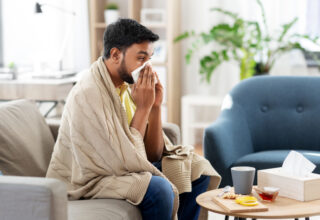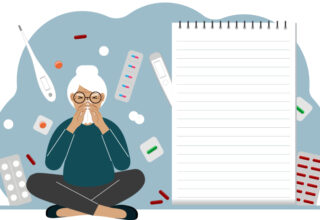Dysentery is a gastrointestinal (GI) disease caused by bacterial or parasitic infection. It’s a common condition that affects around 1.7 billion people worldwide every year. However, it’s more common in developing countries and areas with poor sanitation.
Let’s understand what dysentery is, what are its causes and symptoms, how dysentery is treated, and ways to prevent it.
What is Dysentery?
Dysentery is a GI disease that causes diarrhoea with blood or mucus in it. It has two main types:
Amoebic Dysentery (Amoebiasis):
One of the main causes of amoebic dysentery is the parasite Entamoeba histolytica (E. histolytica). Other parasites that can cause amoebic dysentery include Balantidium coli (B. coli) and Strongyloids.
Bacillary Dysentery:
Bacillary dysentery is the most common type of dysentery. It is caused by a bacterial infection. The most common bacteria that cause bacillary dysentery are Shigella, Salmonella, Campylobacter, and Escherichia coli (E. coli).
What Causes Dysentery?
Dysentery is caused by a parasitic or bacterial infection. These infections are very contagious and are transmitted through the oro-fecal route—when poop (faecal matter) of one person who has dysentery gets into the mouth of the other person who doesn’t have it. This can happen through:
- Contaminated food (food is prepared by someone who has dysentery and doesn’t wash their hands properly or has poor hygiene)
- Drinking contaminated water
- Poor handwashing by the infected person
- Swimming in contaminated water like pools
- Physical contact—touching something that has parasite or bacteria on it, such a toilet handle or sink knob
Common Symptoms of Dysentery
Symptoms of dysentery vary a little depending upon its type. Amoebic dysentery usually doesn’t cause any symptoms.
Symptoms can usually show in 1–3 days after getting the infection, in some people it can take longer.
In some cases it might cause no symptoms at all and people can carry the bug that causes dysentery for weeks and years without knowing about it.
Common symptoms of dysentery include:
- Diarrhoea with blood or mucus
- High fever
- Nausea
- Vomiting
- Upset stomach
- Abdominal pain or cramps
- Weight loss
How is Dysentery Diagnosed
To diagnose dysentery, your doctor will ask you questions about your symptoms, do a physical exam, and order some tests including a stool test in which a sample of your stool (poop) is tested for bacteria, parasite, or ova (parasitic egg cells).
Your doctor may also recommend sigmoidoscopy to confirm the diagnosis and rule out other causes of your symptoms.
Sigmoidoscopy is a procedure in which your doctor would examine the lower part of the large intestines (the sigmoid colon and rectum) with a thin flexible tube with light and camera.
How is Dysentry Treated
If you have amoebic dysentery your doctor would prescribe metronidazole to treat parasitic infection. They may also prescribe antibiotics and over-the-counter (OTC) medications to treat nausea, including bismuth subsalicylate.
In case of bacillary dysentery, most people get better within a few days to a week, without any treatment. If you need treatment, it may include antibiotics and I.V fluids.
In rare cases, some people may need blood transfusion.
How to Take Care of Yourself with Dysentery
If you have amoebic dysentery, it takes around 14 days to get better. In case of bacillary dysentery, you should feel better within 7 days.
The most important thing is to prevent dehydration, which is common with diarrhoea.
- Drink plenty of fluids to avoid dehydration
- Use oral rehydration sachets and mix them in water to drink
- Avoid taking anti-diarrhoeal medications like loperamide
- Take over-the-counter antiinflammatory medications (NSAIDS) like acetaminophen and ibuprofen to reduce pain and fever
- Take over-the-counter medications to treat nausea, like bismuth subsalicylate
Is Dysentery Contagious?
Yes, dysentery is very contagious and usually spreads through contaminated food and water. A person can still transfer the disease to another person even if they don’t have any symptoms.
How Can You Prevent Dysentery?
You can prevent dysentery by practicing good hygiene.
- Wash your hands properly with soap and running water—especially after going to the bathroom and handling or eating food.
- Avoid sharing personal items like toothbrushes, towels, and cups with other people.
- Use bottled or boiled water.
- Avoid physical contact with people who have dysentery.
- Wash fruits and vegetables with running water and eat them after peeling.
- Cook your food thoroughly.
- If you’re traveling to some area where dysentery is common, avoid eating ice creams or using ice cubes, drinks, and water that aren’t in a sealed container.
- If you have dysentery, stay off work, school, or nursery until 48 hours after your diarrhoea stops.
When to See a Doctor
You should see your doctor if your symptoms don’t go away in a few days, get worse over time, or are not responding to treatment or you’re having high fever or severe abdominal pain
Seek urgent medical care if you notice any signs of dehydration, like:
- Dark coloured urine
- Less frequent urination
- Dry mouth or dry cough
- Increased thirst
- Dizziness or lightheadedness
- Confusion
- Headache
- Muscle cramps
Final Thoughts
Dysentery is common, but most cases clear up with rest and fluids. However, it’s important to recognise symptoms early and get medical help if your condition gets worse. Practice good hand hygiene and safe food practices to prevent catching or spreading dysentery.








